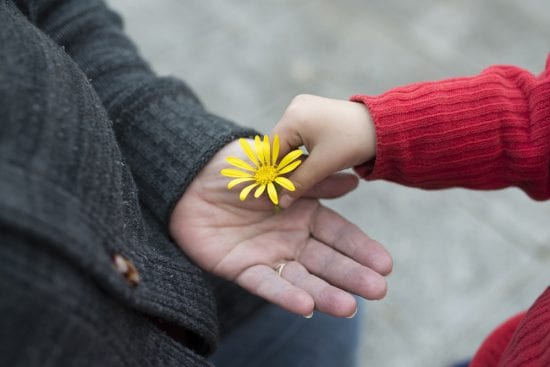Getting kids to be kind could be and probably should be the focus of the long summer vacation from school. After all, one large study found some 49% of children in grades 4–12 said they’d been bullied at school at least once during the past month. And if bullying by definition, is a form of cruelty, the antidote then, must surely be kindness and empathy.
Here’s the truth: we can’t fix the world. We can’t eradicate cruelty; can’t wipe out the bullies at one fell swoop. There’s no app for that. But we can and should be actively cultivating an atmosphere of kindness in our homes. And that is how we can face bullying and cruelty head on: we do it by getting kids to be kind.
Let this summer be a summer of kindness then. And in fact, just by making kindness the focus of your child’s summer, you’re more than halfway there. Because once you make kindness “a thing,” you’ve shown your children that for you, kindness is a priority. You’ve modeled your values for your kids. And after that, getting kids to be kind is a snap.
How you make kindness the focus of your children’s summer vacation is up to you. You might, for instance, begin by just saying it: “Let’s have a theme this summer: being kind to others!”

By saying it out loud: that you’re hereby dedicating the summer to kindness, you’ve already set the tone and initiated a discussion, too. Ask your children to talk about kindness. What do they see as kindness? Can they remember something kind someone did for them? How did it make them feel?
What about the opposite of kindness? What would that look like? Have they experienced that? How did that make them feel?
This is summer, remember, so you’ve got time on your side. It can be an ongoing discussion. In fact, you can say, “As part of our focus on kindness this summer, let’s talk about kindness every morning.”
This also gives your children a chance to talk about anything they did since the last discussion that was kind. Discussion time also affords you an opportunity to praise children for their kindness. Talk about positive reinforcement!

Children can be directed to use discussion time to describe new insights they’ve had about kindness. You might say, “What have you learned about kindness since we last spoke?”
Directing the discussions in this manner can turn children into keen observers of kindness. They will actively look for things they might talk about during family discussion time on kindness. Daddy pulling out a chair for Mommy becomes a kindness rather than something they’ve come to see as rote behavior. They’d never thought about it before: how being polite is being kind. Now they’re thinking about it!
The discussions can be thought-provoking. Is it a kindness to tell a white lie? Was it right to tell a friend she looks nice in her new dress when actually, it looks awful on her? What if everyone laughs at her behind her back for how she looks? Would it have been better to tell her the truth so she might change?
Whose Act of Kindness Wins?
Of course, discussion can’t be the be all and end all of your summer focus on kindness. Getting kids to be kind and having a summer focus on kindness can take many forms. You might, for instance, turn it into a friendly competition: each family member must do a daily kindness. Then talk about whose kindness was the best: who wins.
Let your children see that some kindnesses take no time at all to perform, and make a big difference, while other kindnesses require an investment of time and effort. Both types of kindnesses are important. You may want to stress that some kindnesses may be more important than others, but all kindnesses have value.
Modeling kindness for your child should be your own focus during this summer and at all times. It goes without saying that your behavior should always be kind, as children learn by example. Tempted to say something snide about a third party in conversation with a friend? Remember that your children are listening and paying attention. Do you want them to become ugly gossips? Or do you want them to be kind enough to keep quiet when they’ve got something nasty on their minds?
And guess what? When you make kindness the focus of your summer—when you see getting kids to be kind as a goal, you’ll find you are more careful to be kind even when your children are not with you. You’ll find that being kind is contagious! (And that’s a good thing.)
Kindness Begins at Birth
Now it’s all well and good to make kindness a focus of the long summer vacation. But actually, getting kids to be kind begins at birth. “Empathy and compassion are learned best by experience. If the child is treated with warmth, empathy, and compassion she has a high likelihood of becoming an empathic adolescent and adult. Of course, this empathic relating must begin at birth when the new mom responds to each of her infant’s cries/needs. This warm maternal response should carry through into the early and middle childhood years,” says Dr. Fran Walfish, Beverly Hills family and relationship psychotherapist, author, The Self-Aware Parent, and regular expert child psychologist on The Doctors and CBS TV.
This idea naturally leads to wondering what happens when there is no such warm responsiveness in a child’s early life. Can you still make kindness a focus of a summer? Can it be taught, for instance, to a teen? “The answer and final outcome depends on a number of complicated things,” says Dr. Walfish. “Number one, and most importantly, the teen must personally want to become a compassionate, empathic person. Without that desire the change will not happen. To change requires a tremendous amount of motivation and hard work. If, indeed, the teen is motivated to change, he or she usually does best if they have a mentor.”
Parents may wonder about that: who is the best mentor to teach teenagers loving kindness? Dr. Walfish suggests that the mentor can be a parent, teacher, relative, minister, rabbi, counselor, or therapist. “It must be someone the teen looks up to, admires, respects, and can trust. This opens the pathway for communication,” says Walfish.
“You can tell the teen to treat the other person the way they would want to be treated. But without the idealized respect and trust it will fall on deaf ears.”
Kindness at the Dinner Table
Perhaps the best place to practice getting kids to be kind, whether young children or teenagers, is at the family dinner table. “The dinner table is always a great place to practice taking turns talking and listening. Kids, and many adults, get excited about their own ideas and chime in or interrupt while someone else is speaking,” says Walfish.
“This is a golden opportunity for parents to mediate or referee and make sure each person’s turn to talk is not interrupted. This is also a chance for your kids to grow in front of your very eyes. Praise them for every incremental step toward respectful listening behavior,” because, as it turns out, getting kids to be kind is about being kind enough to take the time to tell them they’ve done good.
Saying “Good job!” to your child, may, in fact, be the kindest thing you do all day, every day this summer. It may be the most important thing you’ll ever do to model kindness for your children. And getting kids to be kind, by the way? Way to end those bullies, for good.
Found what you just read useful? Why not consider sending a donation to our Kars4Kids youth and educational programs. Or help us just by sharing!

This should be required reading for all secondary students.
What a lovely comment, Sharon. Thank you so much.